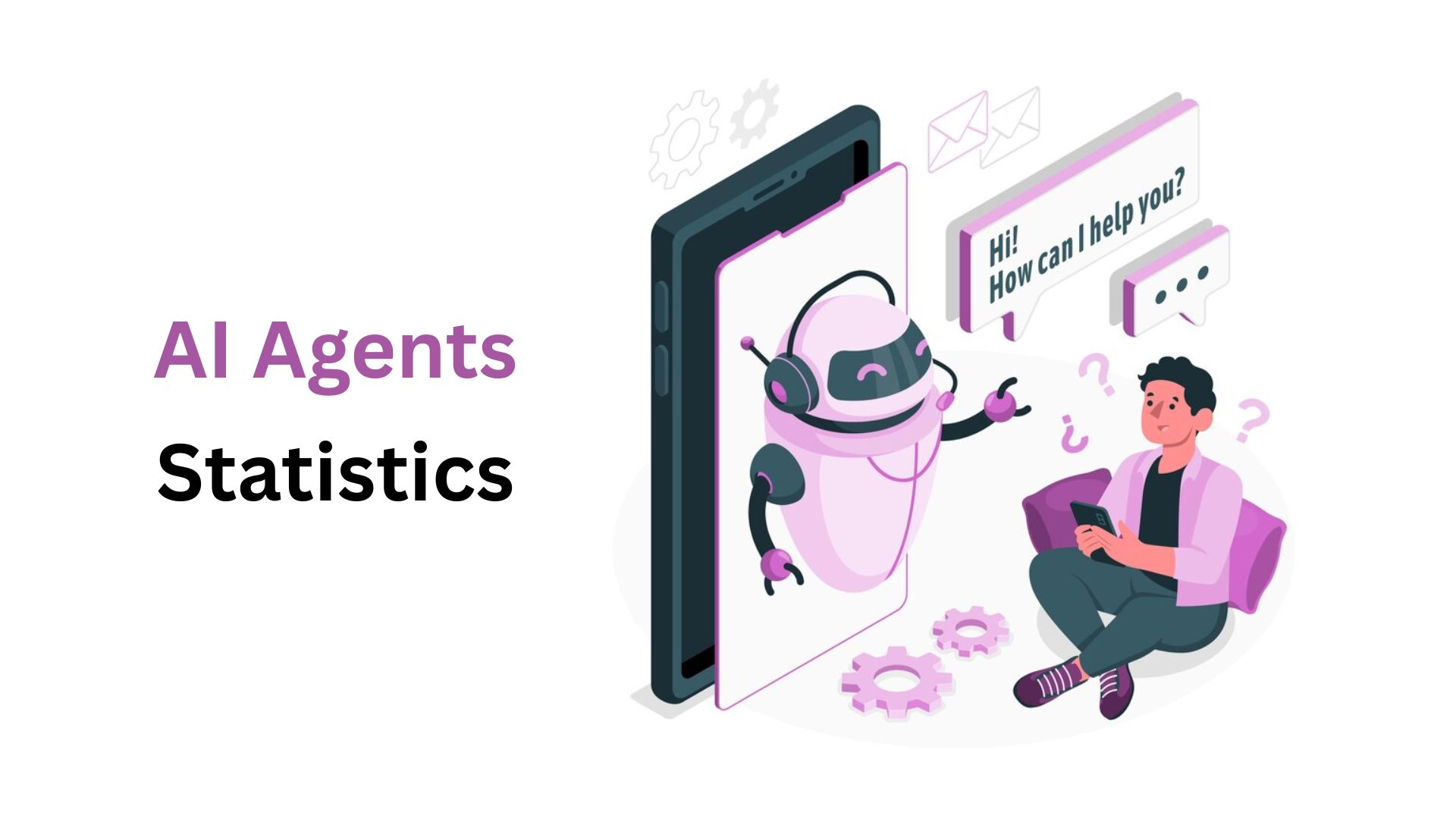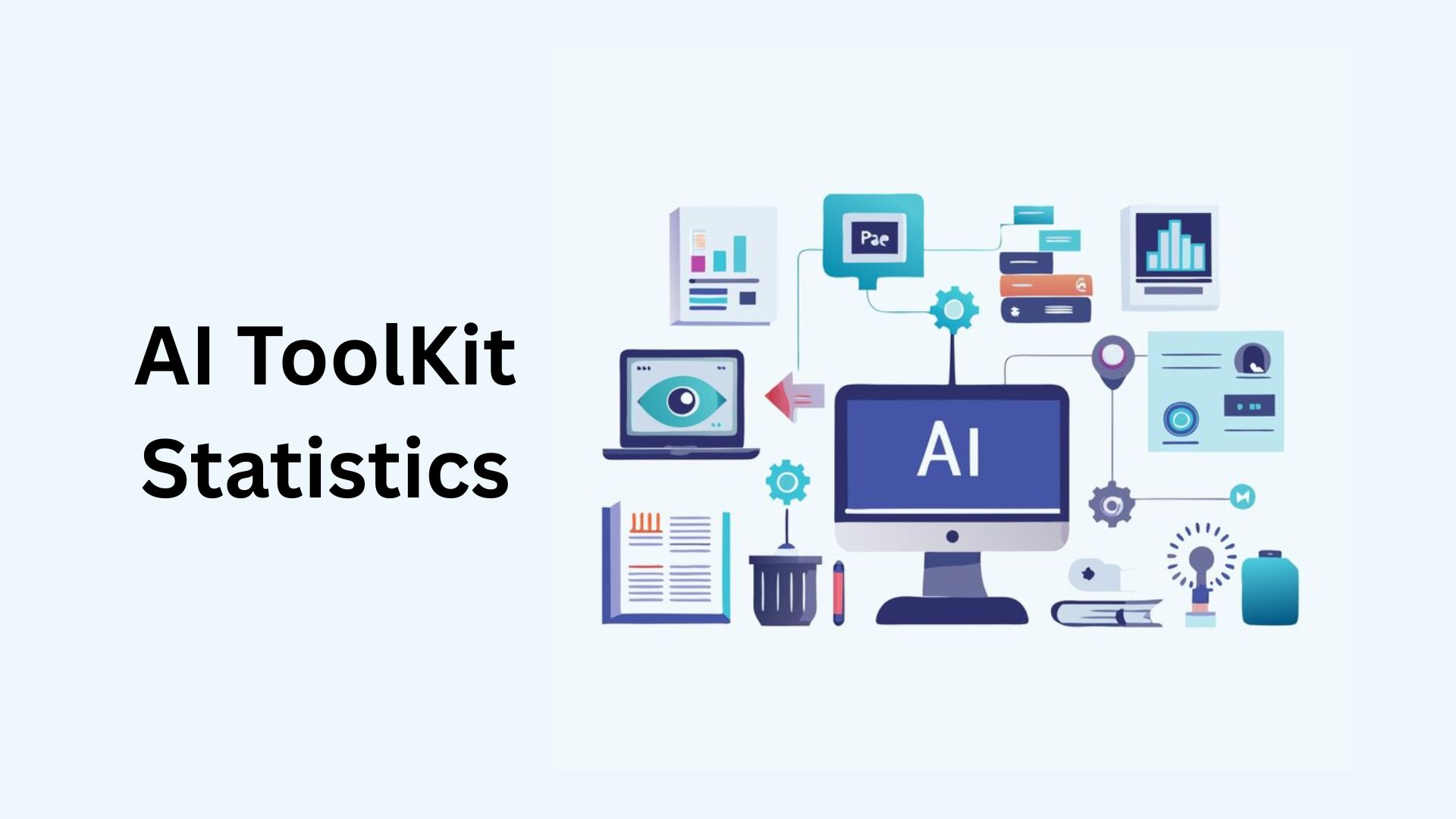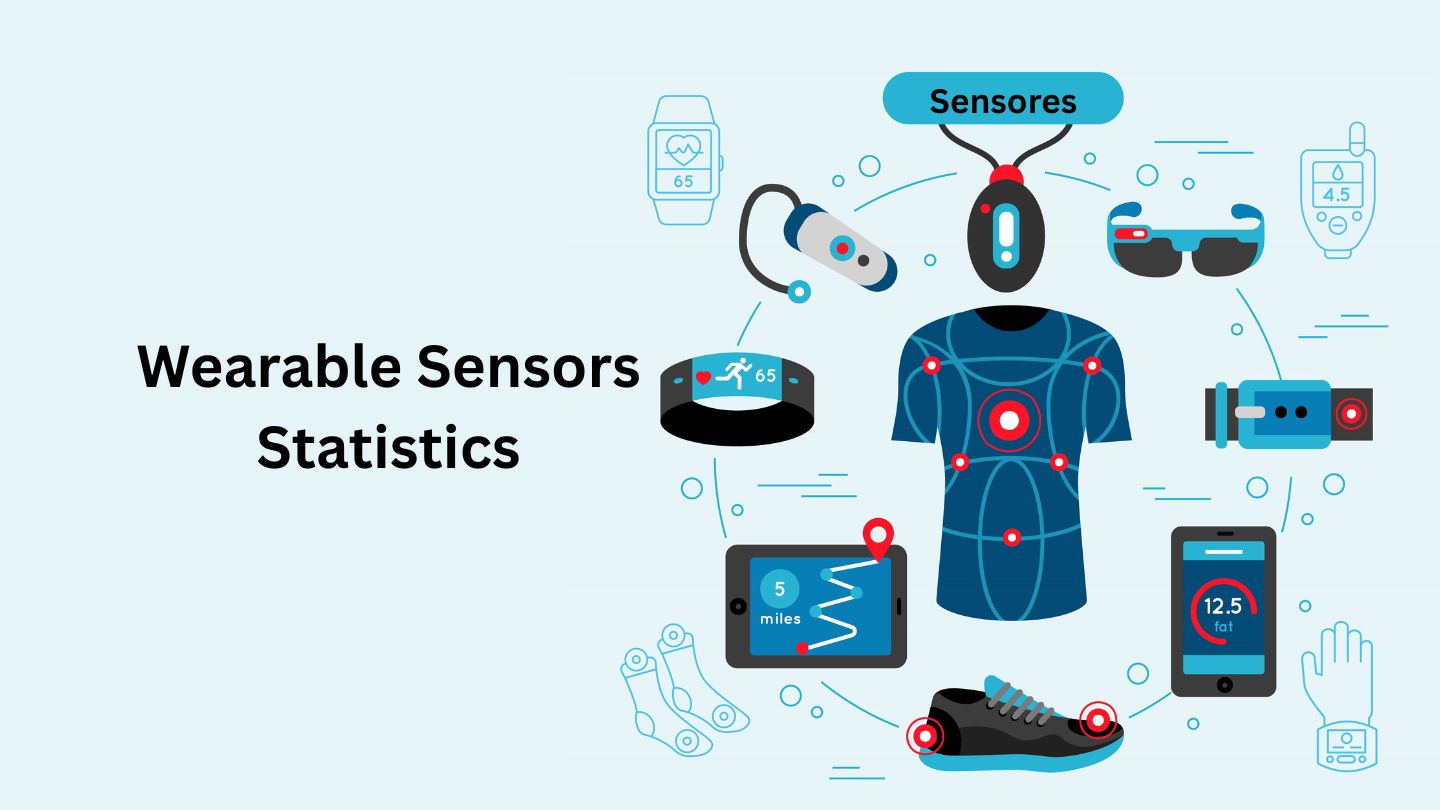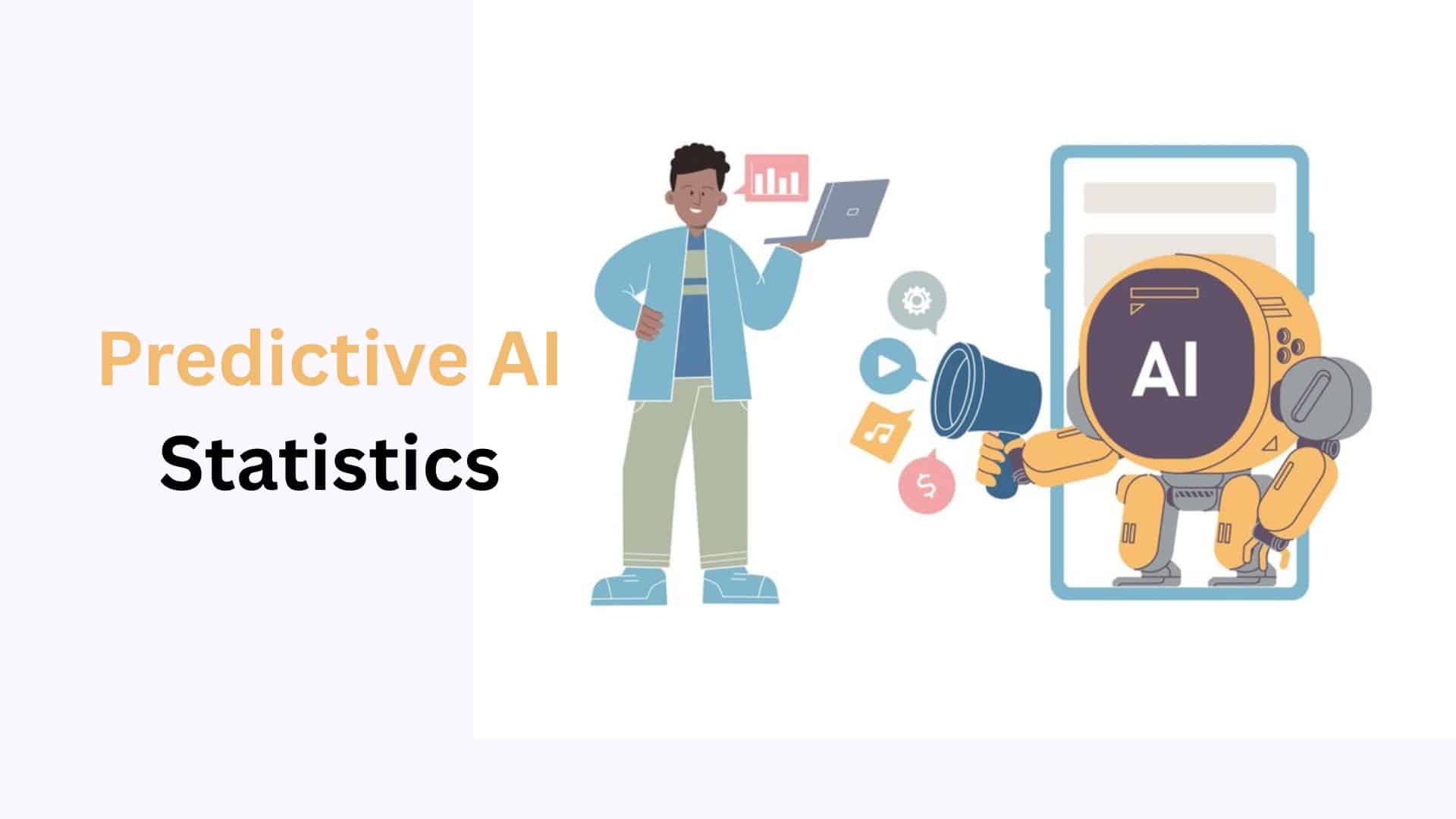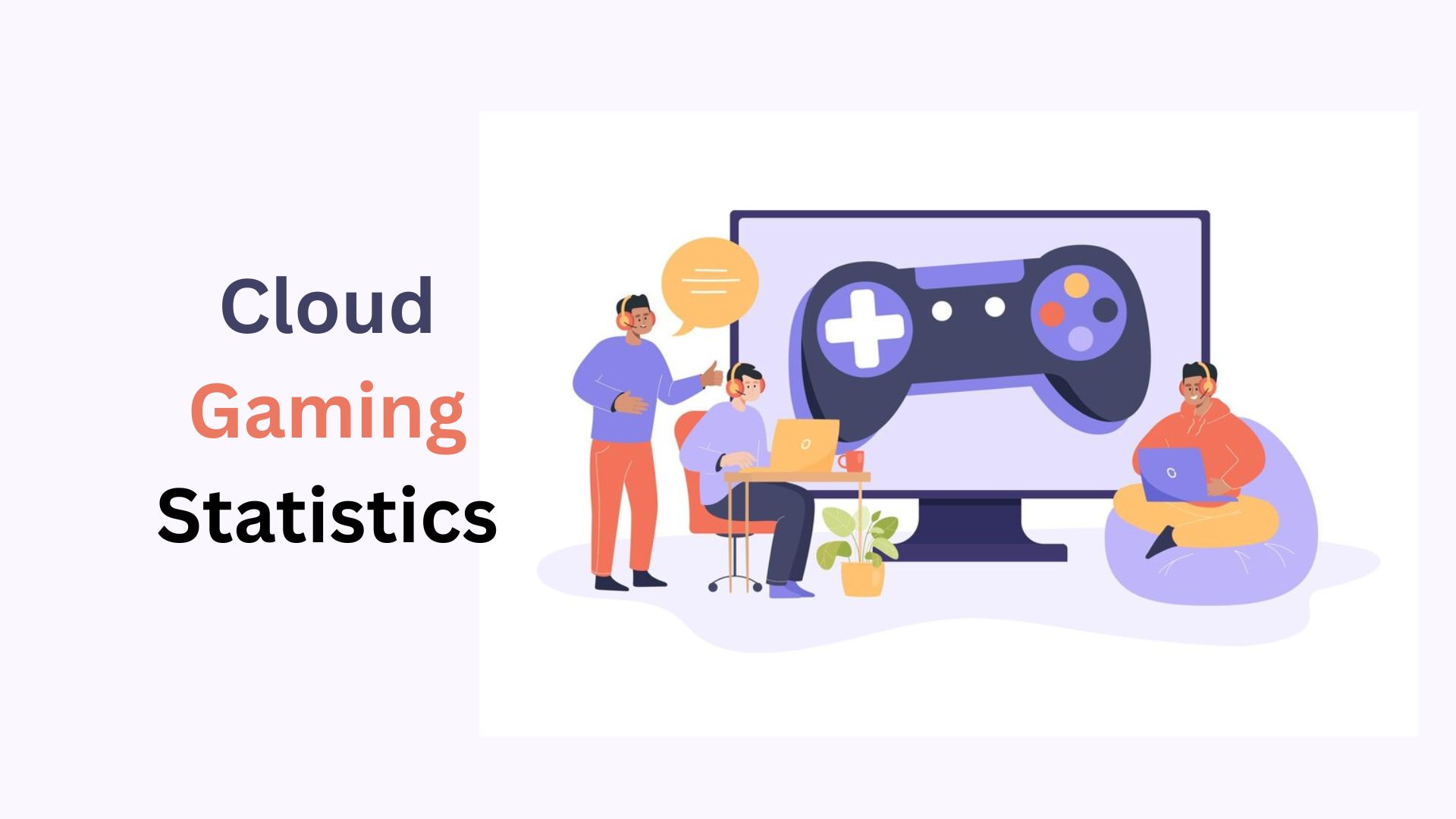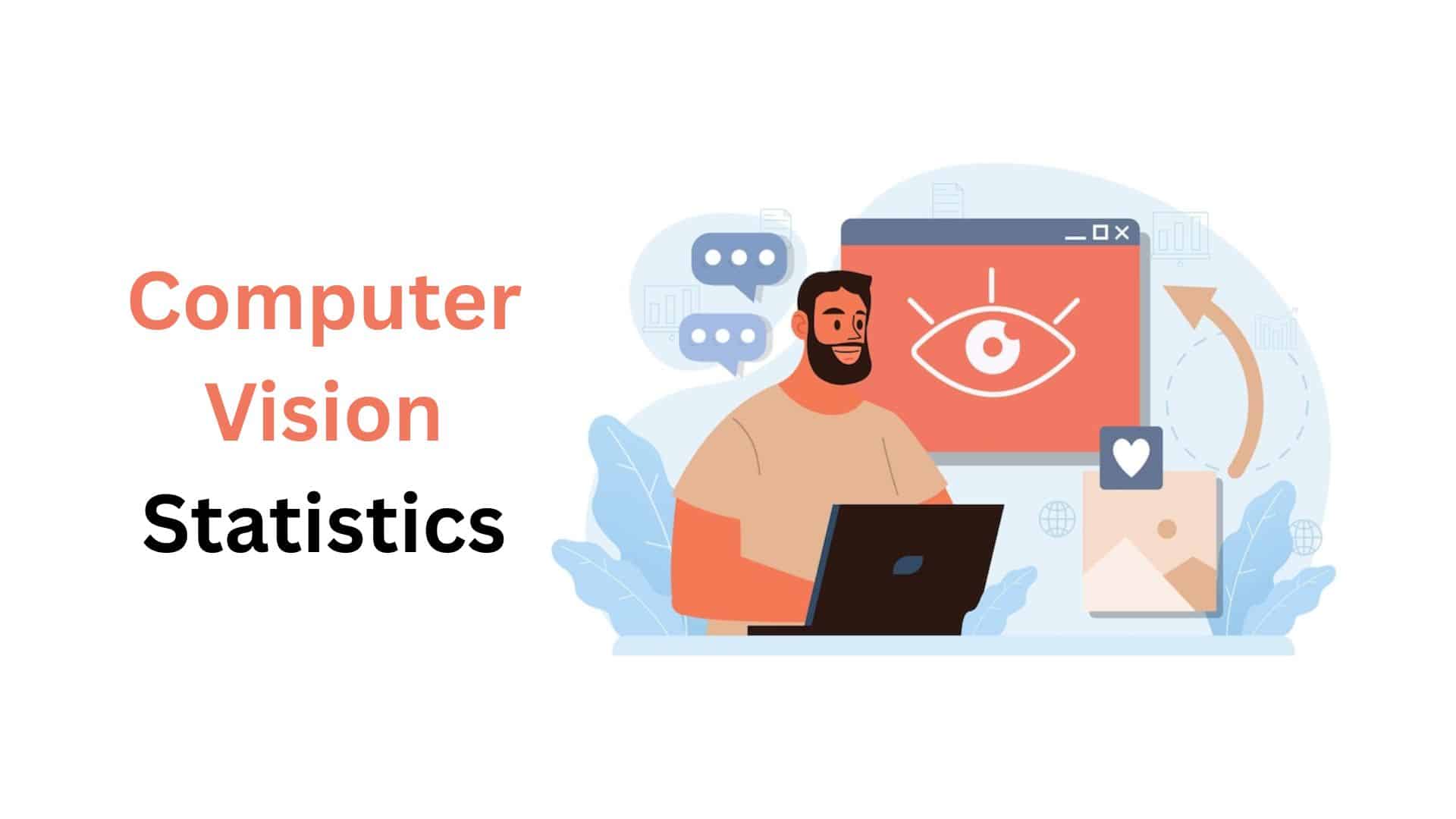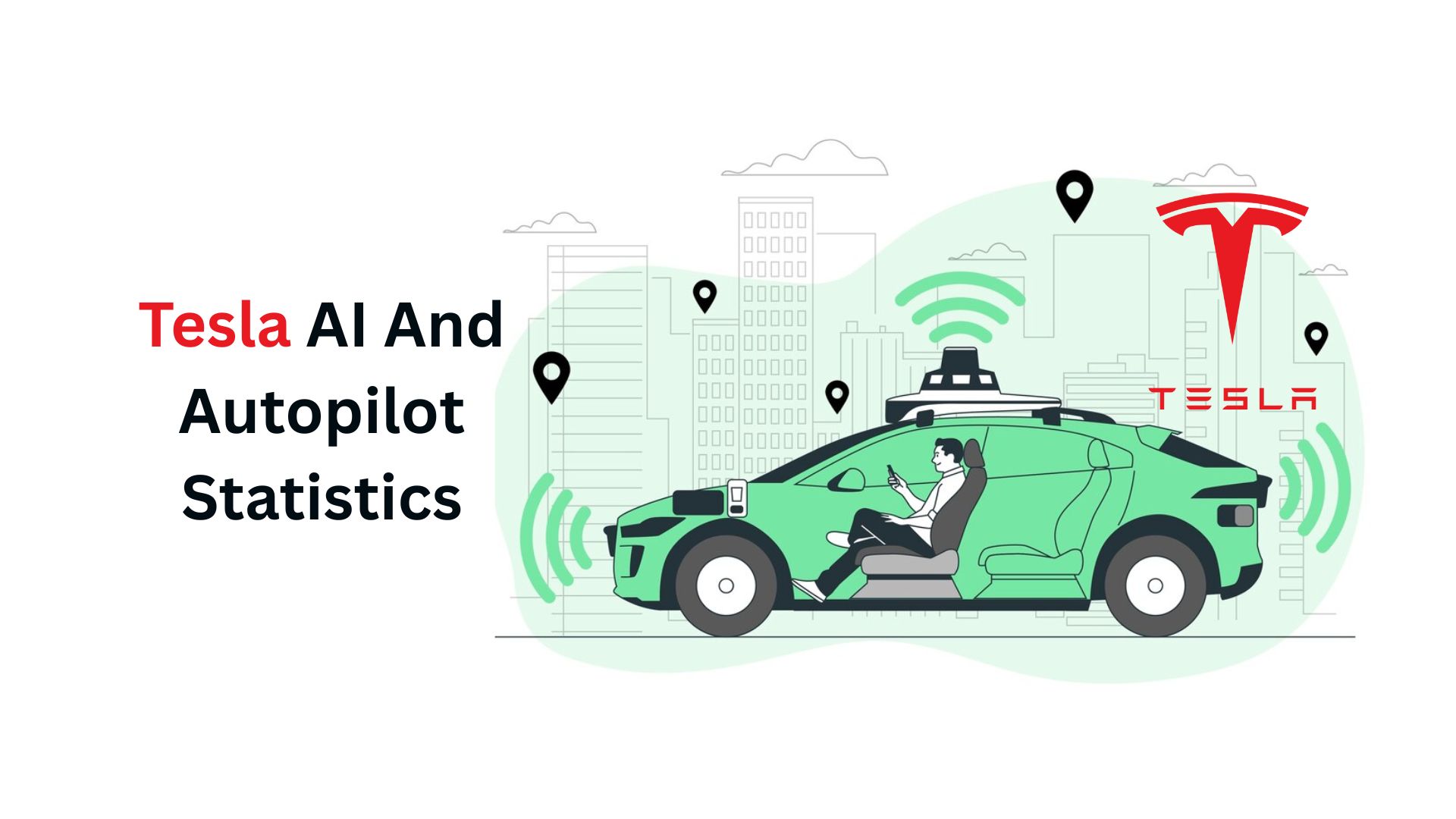Computer Vision Statistics By Application, Education And Regions

Updated · Apr 16, 2025


TABLE OF CONTENTS
- Introduction
- Editor’s Choice
- What is Computer Vision?
- Computer Vision Market Size Statistics
- Computer Vision Adoption Statistics
- Computer Vision Application Insights Statistics
- Computer Vision Application in Educational Sector Statistics
- Computer Vision Regional Statistics
- Computer Vision Statistics by Segment
- Conclusion
Introduction
Computer Vision Statistics: Computer vision is a part of artificial intelligence (AI) that teaches computers to recognize and understand people and objects in pictures and videos. Just like the human eye and brain work together to make sense of what we see, computer vision tries to copy that process using machines.
This area of AI works on automating the steps needed for visual recognition, including image processing (like changing, sending, or storing images) and using math-based methods to spot patterns. As more industries use 3D imaging and automation, the computer vision market—especially AI-powered — is expected to grow quickly.
The main goal of computer vision is to help computers clearly recognize objects and people in digital images and respond correctly. We shall shed more light on Computer Vision Statistics through this article.
Editor’s Choice
- Around a 67% increase in engagement shows how computer vision grabs students’ attention.
- Computer Vision Statistics stated that a 42% adoption rate shows that this technology is now mainstream in education.
- 23% reduction in administrative work gives teachers more time for teaching and student support.
- 89% accuracy in detecting student comprehension lets teachers adjust lessons quickly to meet student needs.
- 31% improvement in learning outcomes proves that computer vision enhances educational results.
- 76% of student satisfaction highlights how the technology aligns with students’ preferences.
- Computer Vision Statistics stated that 58% of schools cite privacy concerns, reminding us to be thoughtful and ethical when implementing these technologies.
- Computer vision in education is a powerful tool for improving learning, but it must be used responsibly and thoughtfully. By combining the benefits of technology with the personal touch of good teaching, we can create more effective and engaging learning environments.
- Facial recognition technology showed impressive growth in 2021, rising by 103.37%.
- Manufacturing holds the biggest share of the computer vision market at 25.98%. This is mainly because companies use it to improve production and check product quality.
- Healthcare is the second-largest sector, making up 20.21% of the market. In this field, computer vision helps with tasks like analyzing medical images, diagnosing problems, and supporting patient care.
- The U.S. leads in North America, with a market size of $8,306 million. Its advanced tech systems and wide use of computer vision across different industries help keep it in front.
- Computer Vision Statistics stated that Brazil is the top country in Latin America, with a market size of $289.8 million. Its large economy and rising use of computer vision are key reasons for this growth.
- South Africa stands out in the Middle East and Africa, with a market value of $203.1 million. The country’s strong tech base and various uses for computer vision support its growth.
- The U.K. leads in Europe with a market size of $944.7 million. Its advanced technology and use of computer vision across many areas have helped boost its market share.
- China is the leader in the Asia-Pacific region, with a market value of $2,526 million, showing its strong role in computer vision.
What is Computer Vision?
Computer vision is about helping machines see, understand, and make sense of images and videos like humans do. It includes capturing images, processing them, analyzing what’s in them, and using that information to make smart decisions. The main idea is to turn pictures into something a computer can understand and respond to. This is done using math, physics, statistics, and machine learning tools.
Computer vision is a science that focuses on building systems that can extract useful information from different kinds of image data, such as video clips, pictures from multiple cameras, 3D scans, point clouds from LiDAR, or medical imaging.
This field has many branches, including:
- Rebuilding scenes in 3D
- Spotting and identifying objects
- Recognizing events and actions
- Following movement in videos
- Figuring out 3D positions of objects
- Teaching computers to learn from images
- Organizing and finding images
- Tracking motion
- Controlling robots using vision
- Creating 3D models of scenes
- Fixing or improving images
These tasks help computers better understand their surroundings and act based on what they “see.”
Computer Vision Market Size Statistics
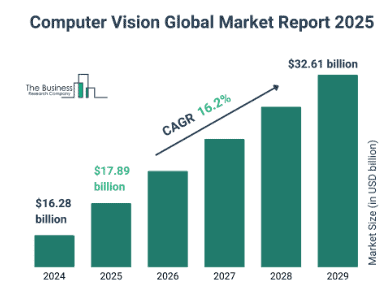 (Source: thebusinessresearchcompany.com)
(Source: thebusinessresearchcompany.com)
- Computer Vision Statistics stated that the global computer vision technologies market is expected to grow at a steady rate of 8.3% per year (CAGR) from 2022 to 2029.
- By the end of 2029, the market could be worth around $24.22 billion.
- Computer vision is artificial intelligence (AI) and machine learning that helps computers “see” and understand what’s in pictures and videos.
- This technology is useful in manufacturing, healthcare, defence, and security industries.
- Although it’s still growing, computer vision has huge potential because of its many benefits.
- It often works with deep learning, neural networks, and other smart technologies.
- It can be used for facial recognition, fixing images, and analyzing hand movements or gestures.
- Computer vision is gaining popularity in manufacturing because it helps save money.
- Computer Vision Statistics stated that companies use it remotely to inspect pipelines, plants, and equipment. It also improves product quality and packaging by spotting problems early and reducing faulty products—this is helping the global market grow fast.
- India’s healthcare sector is growing quickly, thanks to more government support.
- Computer vision tools are helping organizations work more efficiently, protect sensitive information, and expand their operations. These advantages are creating even more opportunities for the market.
- Still, there are a few roadblocks.
- Different industries have different needs, and some areas aren’t using this tech much yet, which may slow things down.
- This worldwide market report also examines recent developments, import-export trends, manufacturing insights, supply chain improvements, market share, and strategic growth opportunities.
Computer Vision Adoption Statistics
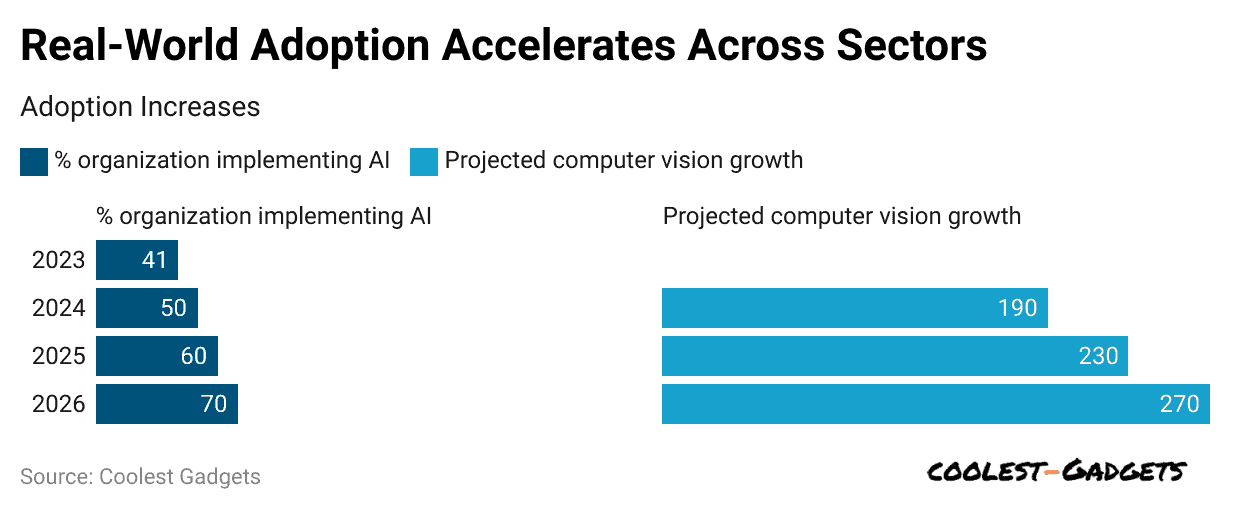 (Reference: softwareoasis.com)
(Reference: softwareoasis.com)
- Computer Vision Statistics stated that 41% of companies have already adopted some form of AI, and computer vision is expected to grow by 270% over the next four years.
- Computer vision’s main uses include manufacturing, retail, self-driving cars, drones, healthcare, and augmented reality.
- The market for computer vision software could reach $89 billion by 2032.
- Big companies are using computer vision to improve data analysis and productivity, and this technology is expected to increase quickly across various industries.
- Thanks to deep learning, facial recognition accuracy has improved from 97.53% in 2019 to over 99% now.
- However, only 48% of Americans trust law enforcement to use facial recognition technology properly.
- There are growing calls for new regulations to deal with issues like bias and the loss of privacy.
Computer Vision Application Insights Statistics
- The quality assurance and inspection segment was the largest in 2024.
- The demand for high-quality products and the ability to inspect items in real time are major reasons for its growth.
- Computer Vision Statistics stated that computer vision systems for quality checks can be used in many industries, from spotting surface defects in metals and electronics to checking the quality of packaging in food and drinks.
- This flexibility helps technology spread across different industries.
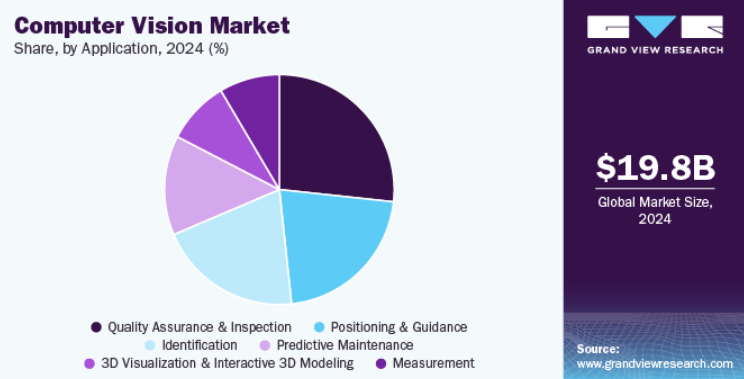 (Source: grandviewresearch.com)
(Source: grandviewresearch.com)
- The 3D visualization and interactive 3D modelling segment is expected to grow significantly in the coming years. The rise in demand for Virtual and Augmented Reality (VR/AR) applications, improvements in 3D imaging and sensing technologies, and increased use in industrial design and manufacturing are driving this growth.
- Building Information Modelling (BIM) and 3D architectural visualization are becoming more popular in the construction and architecture industries.
- 3D models give clear, detailed views of buildings, which helps with design, planning, and managing buildings. This reduces errors, rework, and overall project costs.
Computer Vision Application in Educational Sector Statistics
- Studies show that classrooms using computer vision for interactive learning report a 67% boost in student engagement compared to traditional methods.
- This highlights how visual technologies keep students’ attention, especially in today’s digital age, where distractions are everywhere.
- Computer vision gives teachers real-time feedback to adjust lessons when students lose focus.
- Combining this technology with game-like features makes learning more exciting for students used to digital experiences.
- Computer Vision Statistics stated that 42% of schools worldwide have added at least one computer vision technology to their education system.
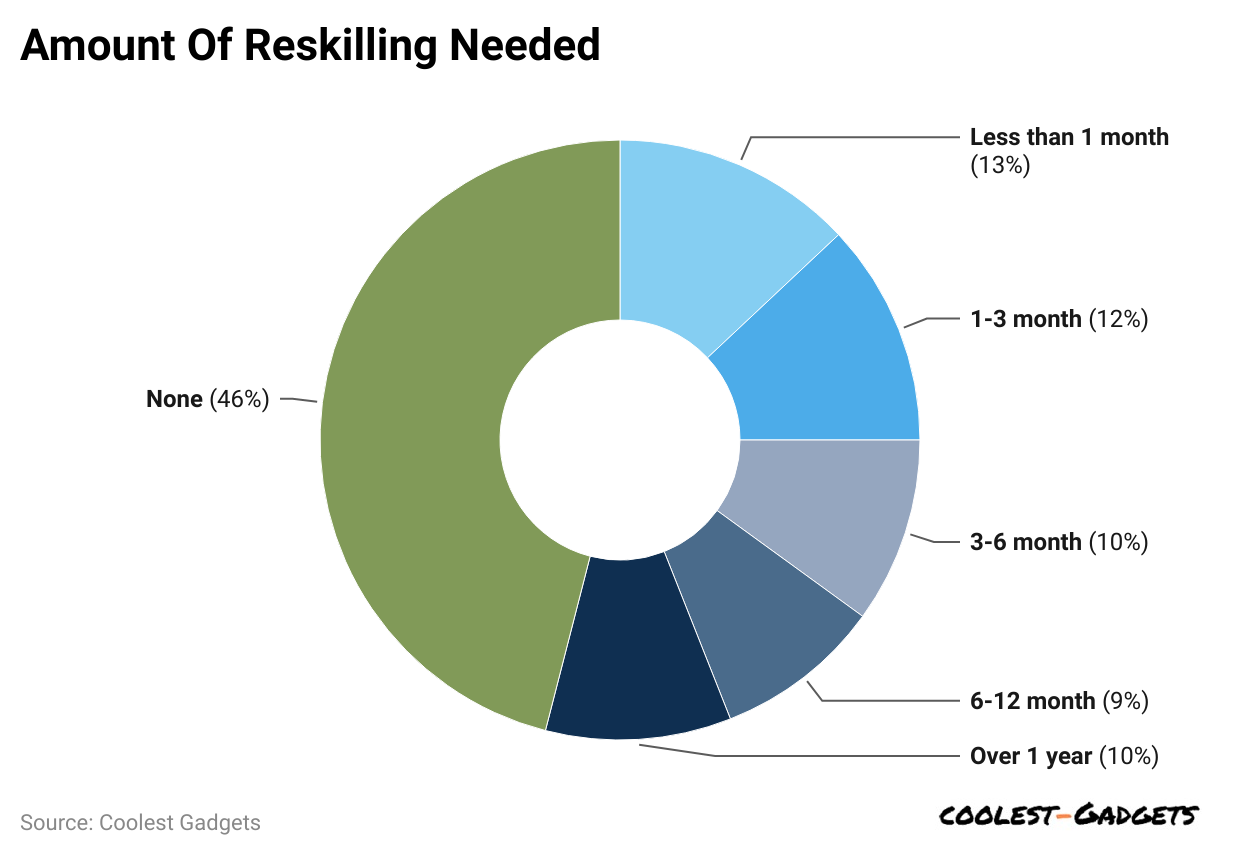 (Reference: pyimagesearch.com)
(Reference: pyimagesearch.com)
- This number has doubled since 2019, showing rapid adoption of these technologies.
- Computer Vision Statistics stated that the adoption rates vary across different levels of education: higher education leads with 58%, secondary education has 47%, and primary education stands at 21%.
- These differences are due to factors like available technology, budget, and how well these technologies fit the needs of each educational level.
- Teachers who use computer vision to track attendance, grade homework, and monitor classrooms save 23% of their time on administrative tasks.
- This means they get about nine extra hours per week to focus on lesson planning, student support, and professional development.
- When calculated yearly, this means:
- Time Saved Annually = 9 hours × 36 weeks = 324 hours per teacher
- This time-saving helps reallocate resources and improve the overall education system.
- Computer vision tools that track students’ facial expressions and body language during lessons can identify when they are confused or not engaged with 89% accuracy.
- This allows teachers to adjust their teaching instantly and address learning gaps before they become bigger problems.
- Unlike traditional methods, which may take days or weeks to identify comprehension issues, computer vision provides feedback in seconds, helping teachers respond quickly to student needs.
- A study across 47 universities showed that using computer vision for project-based assessments improved learning outcomes by 31% compared to traditional methods.
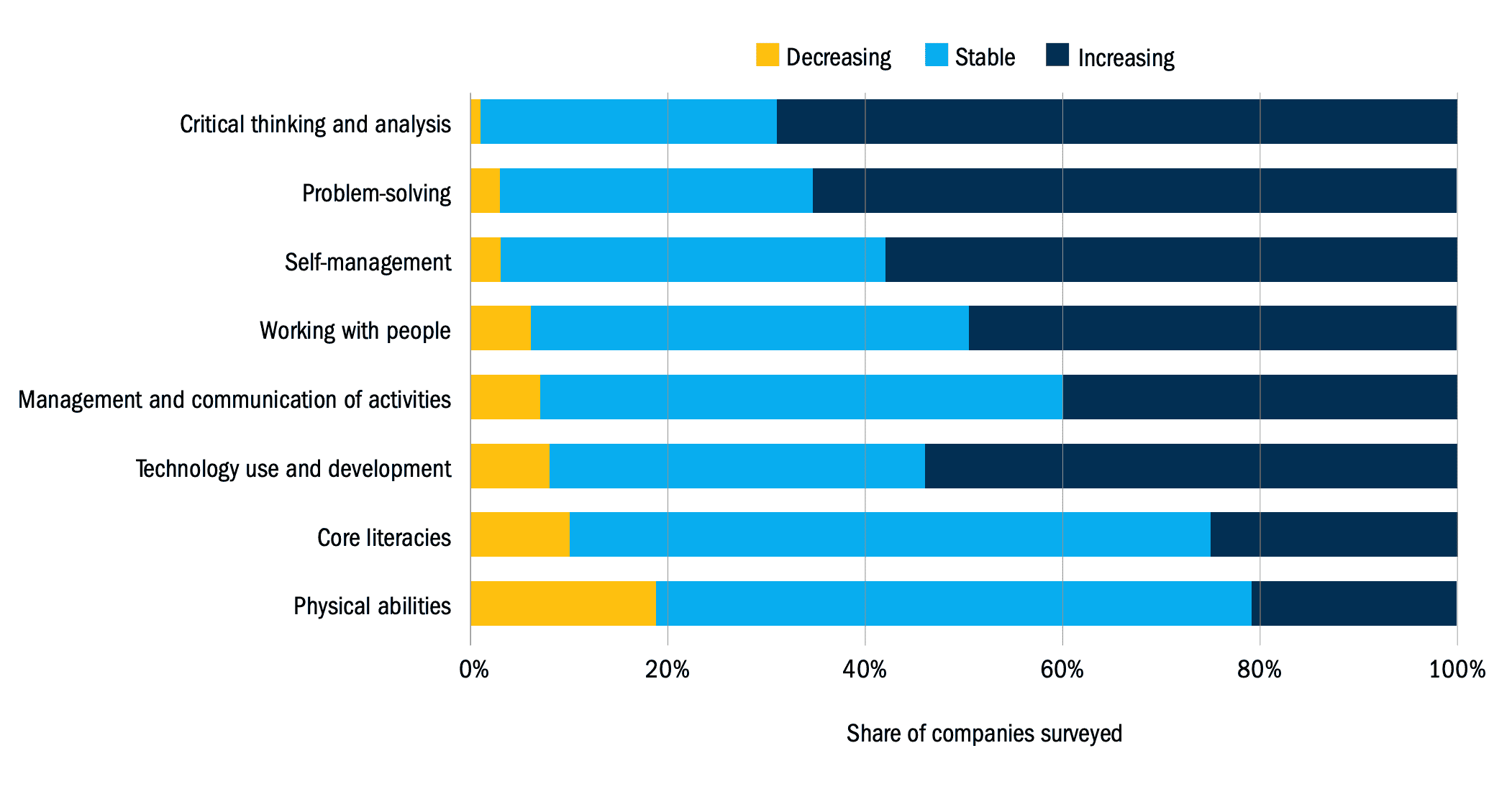 (Source: pyimagesearch.com)
(Source: pyimagesearch.com)
- Computer vision ensures consistent evaluations and detailed feedback on student work.
- Computer Vision Statistics stated that 76% of students find the learning experience more engaging and effective.
- This high satisfaction rate leads to better material retention and more willingness to participate in lessons.
- At Stanford University’s School of Medicine, a computer vision system tracks hand movements and provides real-time guidance to medical students practising surgical skills.
- Since its introduction, clinical skills scores have improved by 24%, and student confidence has increased by 37%.
- Privacy and ethical concerns are key challenges for the wider use of computer vision in schools.
- The Educational Technology Consortium reports that 58% of schools mention privacy as a major barrier.
These concerns include:
- Data security
- Getting student consent and making sure the technology is age-appropriate
- Following rules like FERPA, GDPR, and COPPA
- The potential for surveillance affecting academic freedom
- Bias in algorithms and fairness in grading
- Schools must address these issues with clear data policies, strong security, and inclusive designs.
- The cost of implementing computer vision in schools ranges from $80,000 to $250,000, depending on the school size and technology use.
- This high cost is a challenge for schools in lower-income areas and could worsen the digital divide.
- Maintenance costs add 15-20% per year to the initial investment, requiring schools to plan for sustainable funding.
- Before implementing these technologies, schools must consider both the costs and benefits.
- Some educators worry about becoming too reliant on technology.
- Computer Vision Statistics stated that 64% are concerned about losing personal connections in increasingly tech-based classrooms.
- The best computer vision implementations use technology as a tool to support, not replace, human teaching. This way, technology enhances the educational experience while keeping the importance of personal interaction and mentorship intact.
Future Trends and Conclusions
- Multimodal learning analysis: Combining visual, speech, text, and physical data to create complete learning profiles.
- Affordable technology: Making computer vision solutions more accessible to more schools.
- Augmented reality: Using computer vision and AR together for immersive learning experiences.
- Emotion-aware learning systems: Recognizing students’ emotional states to adjust how lessons are delivered.
- Student-controlled data: This gives students more control over how their visual data is used and stored.
- Research centers like MIT and Stanford’s AI for Education are pushing the boundaries of what’s possible, promising even more powerful educational tools.
Computer Vision Regional Statistics
The computer vision market in North America is expected to grow strongly during the forecast period. The increasing use of AI and Deep Learning, more applications in self-driving cars, and growth in the healthcare sector are all helping this growth.
Trends in the U.S. Computer Vision Market
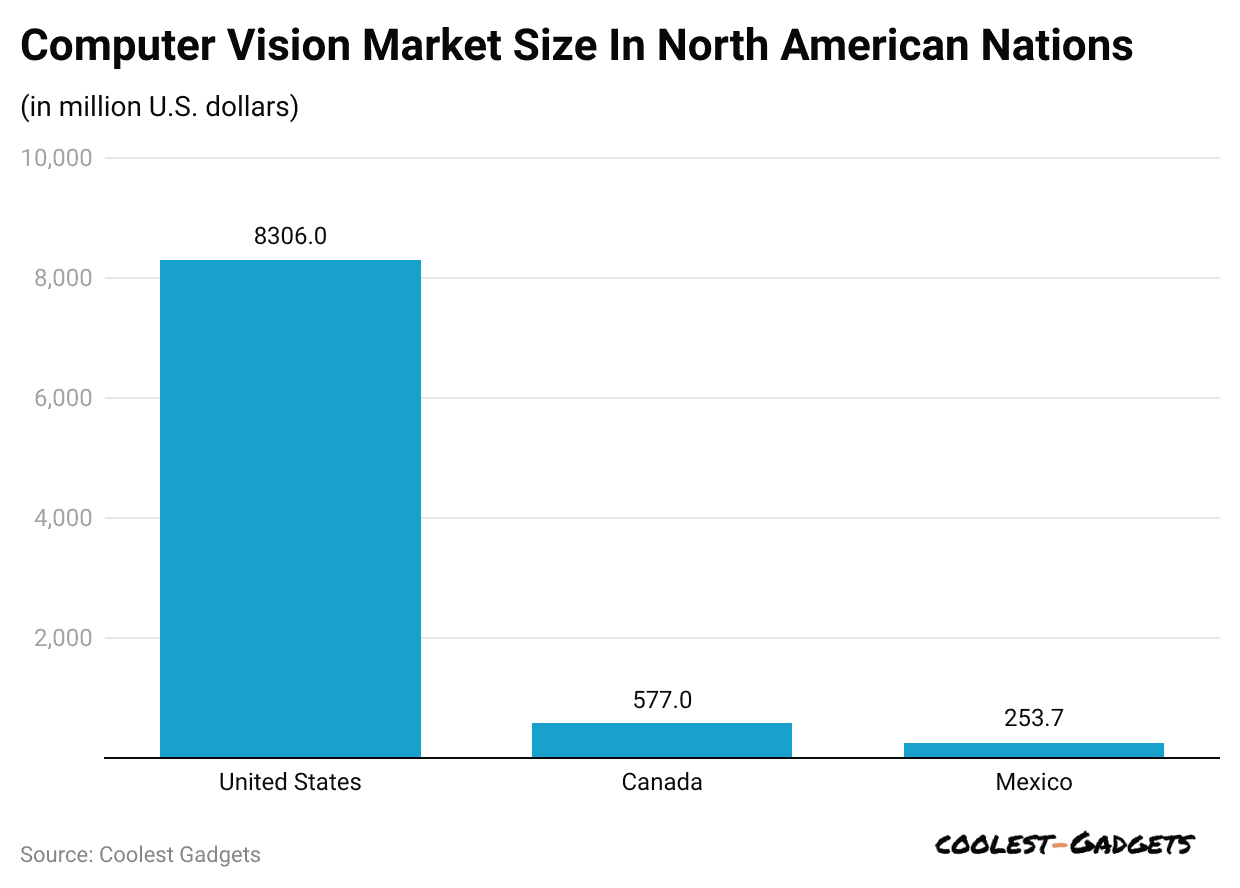 (Reference: scoop.market.us)
(Reference: scoop.market.us)
- In 2024, the U.S. had the largest computer vision market.
- The U.S. government and military are spending heavily on computer vision for security, surveillance, and defence, including drone technology and border security systems.
- These investments are creating new growth opportunities in the country.
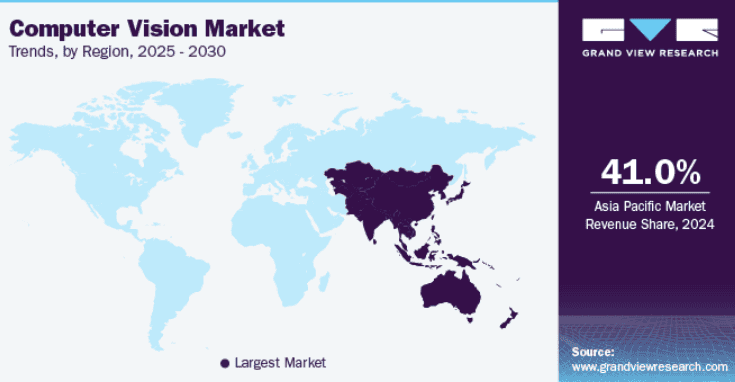 (Source: grandviewresearch.com)
(Source: grandviewresearch.com)
Asia-Pacific Computer Vision Market Trends
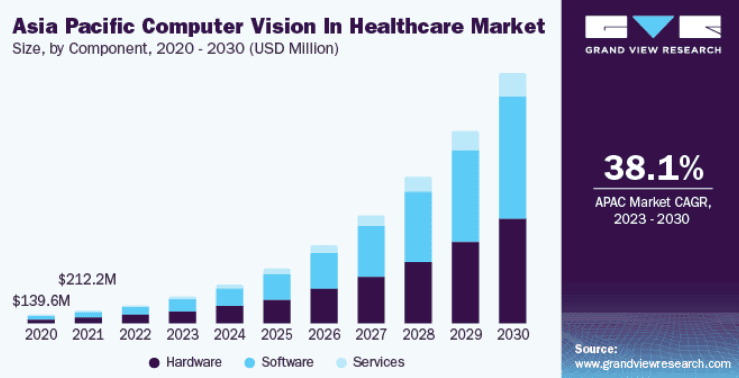 (Source: grandviewresearch.com)
(Source: grandviewresearch.com)
- In 2024, the Asia-Pacific computer vision market had over 41% of the global share.
- This growth is driven by rapid industrial development, automation, and the strong presence of electronics, semiconductors, and automotive industries.
- Countries such as China, Japan, South Korea, and India are major car manufacturers, and computer vision is widely used in car production, self-driving technology, and safety systems, boosting demand in the region.
Europe Computer Vision Market Trends
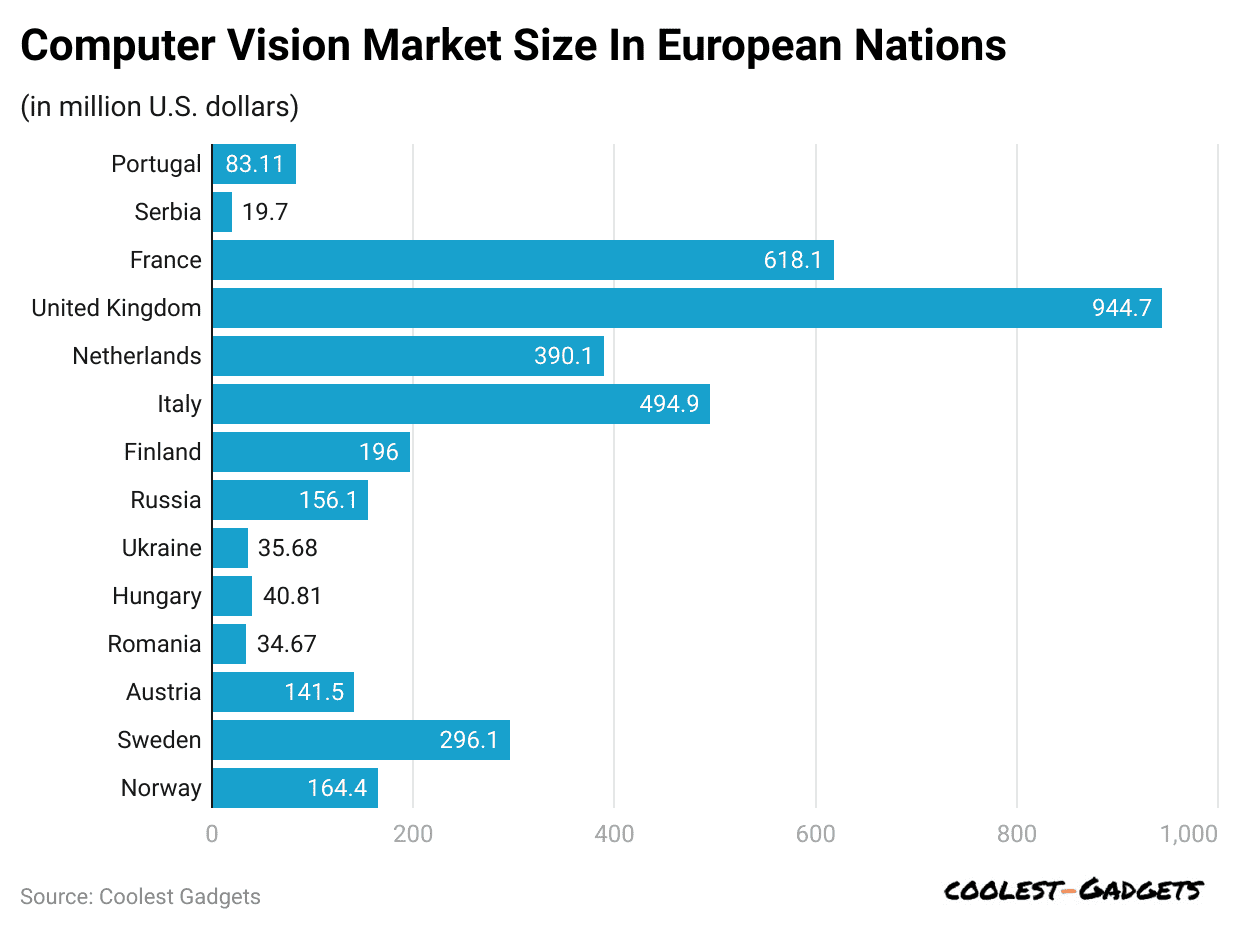 (Reference: scoop.market.us)
(Reference: scoop.market.us)
- The computer vision market in Europe is expected to grow significantly in the coming years.
- Industries like manufacturing, automotive, and logistics in Europe are adopting automation to improve productivity and efficiency.
- Computer vision is essential in automating tasks like quality control, defect detection, and robotics navigation, helping to spread Industry 4.0 technologies across Europe.
Middle East and Africa Computer Vision Market Trends
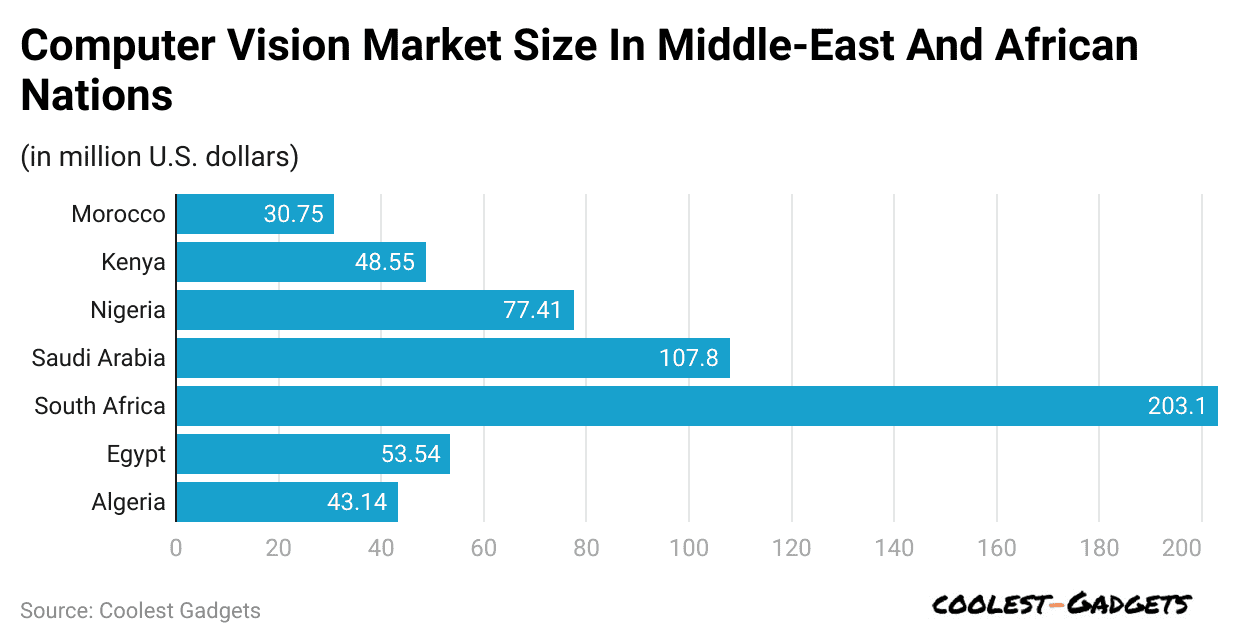 (Reference: scoop.market.us)
(Reference: scoop.market.us)
- The computer vision market in the Middle East and Africa (MEA) is also expected to grow strongly.
- Computer Vision Statistics stated that Countries like the UAE and Saudi Arabia (KSA) are investing in smart cities and digital transformation projects.
- Computer vision plays a critical role in technologies like surveillance systems, traffic monitoring, and smart infrastructure management, which are key to these projects.
Computer Vision Statistics by Segment
The computer vision industry is divided into three key categories: facial recognition, image recognition, and speech recognition.
Facial Recognition
- Statista said the global facial recognition market was valued at about $4.95 billion in 2023.
- It’s projected to grow to nearly $10.34 billion by 2030, with a yearly growth rate (CAGR) of 11.10% from 2023 to 2030.
- In 2023, the U.S. held the largest share, totaling around $1.85 billion.
Image Recognition
- By the end of 2023, the global image recognition market was worth about $10.53 billion.
- This number is expected to rise to around $21.07 billion by 2030, growing at a CAGR of 10.42%.
- The United States had the top market share in the same year, bringing in around $3.94 billion.
Speech Recognition
- 2023, the worldwide speech recognition market was estimated at nearly $6.80 billion.
- It’s predicted to reach about $19.57 billion by 2030, showing a CAGR of 16.30%.
- That year, the U.S. led globally with a roughly $2.51 billion market share.
Conclusion
To sum it up, computer vision is growing fast and making a big impact in many industries. The market for facial, image, and speech recognition technologies is expanding quickly, with strong growth expected over the next few years. Tools powered by AI, machine learning, and 3D imaging are helping companies boost productivity, improve quality, and make smarter choices.
The U.S., Asia-Pacific, and Europe are leading this growth, especially in healthcare, cars, manufacturing, and education. As concerns around privacy and costs are being handled, more businesses are expected to adopt computer vision, changing how people and machines work together worldwide. We have shed enough light on Computer Vision Statistics through this article.
Sources
FAQ.
Computer vision and visual AI tools are creating more job opportunities for computer vision engineers, and this demand is expected to grow. New technologies like Edge AI and AIoT (Artificial Intelligence of Things) are making it easier to use computer vision across a wide range of industries.
Is computer vision becoming outdated? The ICCV23 workshop clearly showed that it’s not dying — it’s growing and transforming. Experts at the event explained that one of the most promising areas is the combination of computer vision with language models. This mix opens the door to smarter and more powerful AI systems for the future.

Saisuman is a talented content writer with a keen interest in mobile tech, new gadgets, law, and science. She writes articles for websites and newsletters, conducting thorough research for medical professionals. Fluent in five languages, her love for reading and languages led her to a writing career. With a Master’s in Business Administration focusing on Human Resources, Saisuman has worked in HR and with a French international company. In her free time, she enjoys traveling and singing classical songs. At Coolest Gadgets, Saisuman reviews gadgets and analyzes their statistics, making complex information easy for readers to understand.


